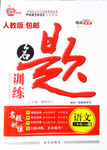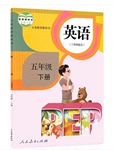题目内容
单词拼写
1.She has one of the most _________(才华横溢的) minds in the country.
2.Scientists have made a major_______(突破) in the treatment of cancer.
3.Please help me to _______(计算) out my income tax.
4.They made use of ______(先进的) technology to send up a man-made satellites.
5.The stamp ______(附着) to the envelope is unique.
6.The surgeon _______(诊断) his illness as a rare bone disease.
7.During the most productive time in her _____(生涯), she wrote five novels.
8.Please tell me what happened in ______(简洁);I don’t go into the details.
9.Our main task now is increasing _____(产量)。
10.________(农业) plays an important part in our daily life.
11.The public should be ______(教育) in how to use energy more efficiently.
12.There was a woman lying _____(昏迷不醒的) on the floor.
13.Although we were busy, we accepted the _______(邀请) to the wedding.
14.She got into a ______(恐慌) when she couldn’t find the keys.
15.I hope our holiday will be ____(延长)
16.We asked for _______(平等)
17.He won a round of _______(掌声) when he ended his speech.
18.Some historians think the dreams of ancient peoples led to the development of _______(宗教)
19.I seem to have ________(使参与) myself in something I don’t understand.
20.The old man knows how to _____(交流) with dogs.
21.If it is ____(方便的) to you, I will call on you after work.
22.Because of the heavy traffic, I had to get to my ______(目的地) two hours before the lecture time.
23.Have you found a ______(解决方法) to your trouble?
24.Not many people agree with the government’s ________(预言) that he economy will be improved.
25.After some argument, Ruth was ________(最终) won over to our side.
 开心快乐假期作业暑假作业西安出版社系列答案
开心快乐假期作业暑假作业西安出版社系列答案 名题训练系列答案
名题训练系列答案 期末集结号系列答案
期末集结号系列答案A Language Programme for Teenagers
Welcome to Teenagers Abroad! We invite you to join us on an amazing journey of language learning.
Our Courses
Regardless of your choice of course, you’ll develop your language ability both quickly and effectively.
Our Standard Course guarantees a significant increase in your confidence in a foreign language, with focused teaching in all 4 skill areas----speaking, listening, reading and writing.
Our Intensive Course builds on our Standard Course, with 10 additional lessons per week, guaranteeing the fastest possible language learning (see table below).
Course Type | Days | Number of Lesson | Course Timetable |
Standard Course | Mon-Fri | 20 lessons | 9:00---12:30 |
Intensive Course | Mon-Fri | 20 lessons | 9:00---12:30 |
10 lessons | 13:00---14:30 |
Evaluation
Students are placed into classes according to their current language skills. The majority of them take on online language test before starting their programme. However, if this is not available, students sit the exam on the first Monday of their course.
Learning materials are provided to students throughout their course, and there will never be more than 15 participants in each class.
Arrivals and Transfer
Our programme offers the full package—students are take good care of from the start through to the very end. They are collected from the airport upon arrival and brought to their accommodation in comfort. We require the student’s full details at least 4 weeks in advance.
Meals/Allergies(过敏)/Special Dietary Requirements
Students are provided with breakfast, dinner and either a cooked or packed lunch(which consists of a sandwich, a drink and a dessert). Snacks outside of mealtimes may be purchased by the student individually.
We ask that you let us know of any allergies or dietary requirements as well as information about any medicines you take. Depending on the type of allergies and/ or dietary requirements, an extra charge may be made for providing special food.
1.How does Intensive Course differ from Standard Course?
A. It is less effective. B. It focuses on speaking.
C. It includes extra lessons. D. It give you confidence
2.When can a student attend Standard Course?
A. 13:00-14:30 Monday. B. 9:00-12:30 Tuesday
C. 13:00-14:30 Friday. D. 9:00-12:30 Saturday.
3.Before starting their programme, students are expected to _____.
A. take a language test
B. have an online interview
C. prepare learning materials
D. report their language levels
4.With the full package, the programme organizer is supposed to_____.
A. inform students of their full flight details
B. look after students throughout the programme
C. offer students free sightseeing trips
D. collect students’ luggage in advance
5.Which of the following may require an extra payment?
A. Cooked dinner. B. Mealtime dessert.
C. Packed lunch. D. Special diet.

